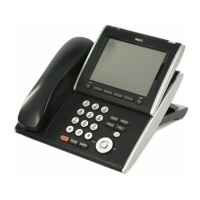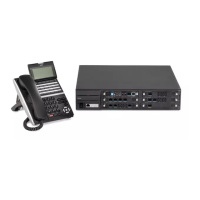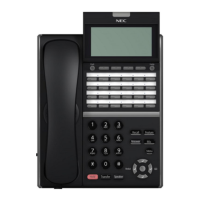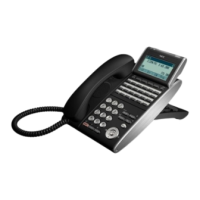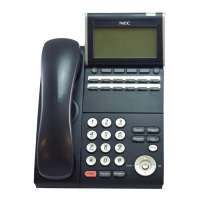Issue 2.0
SV9100 Networking Manual 8-7
SECTION 5 PROVIDING POWER
IP telephones require power to function. This can be provided in various ways.
5.1 Local Power
The IP telephone has a connector for external power. This is supplied by an AC
adapter that outputs 27V DC. This means that a power outlet is required in the
vicinity of each IP Phone, and loss of power in the building prevents the
telephones from working.
Use only the NEC supplied power supply.
5.2 802.3af Power Over Ethernet (PoE)
A 802.3af PoE switch is a data switch that also provides power over the spare
pairs. The switch can be used with any device (not just IP phones) and detects
whether or not power is required. As all phones receive their power from one
device, it is easy to protect the IP phones from loss of power (by connecting the
PoE switch to a UPS).
SECTION 6 PEER-TO-PEER
An IP telephone can send and receive RTP packets to or from another IP telephone
without using DSP resources on a GPZ-IPLE. This operation allows only Intercom
calls between the IP telephones.
If a DT800/DT700 IP multiline telephone or trunk line is required, a DSP resource is
needed and a GPZ-IPLE must be installed. If a conference call is initiated while on a
peer-to-peer call, the peer-to-peer connection is released and a new non peer-to-
peer connection is created using the GPZ-IPLE. If the third party drops out of the
conversation, the call reverts to a peer-to-peer call. There is silence while this
conversion is made by the system.
Although the peer-to-peer feature is supported for IP Station-to-IP Station calls, the
UNIVERGE SV9100 chassis must still have a registered GPZ-IPLE installed in the
system.
With Barge-In, a short silence may occur if the following occurs:
Peer-To-Peer call receives a Barge-In without a Barge-In tone.
Peer-To-Peer call receives a Barge-In with Monitor mode.
Established Barge-In is disconnected.
The Peer-to-Peer feature is a programmable feature that may be enabled or
disabled by accessing Data Program 15-05-50 - Peer-to-Peer Mode.
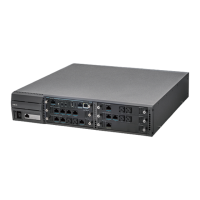
